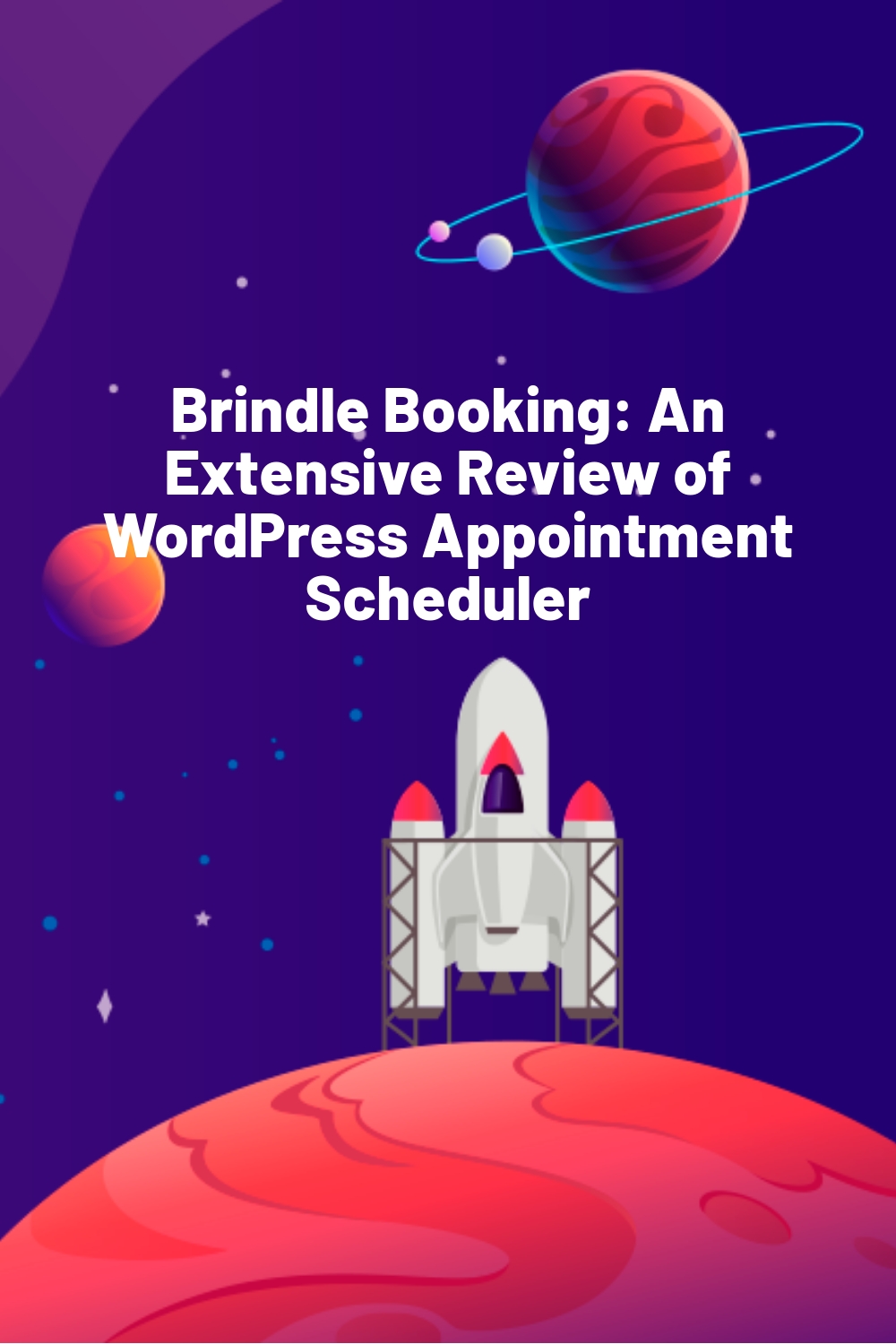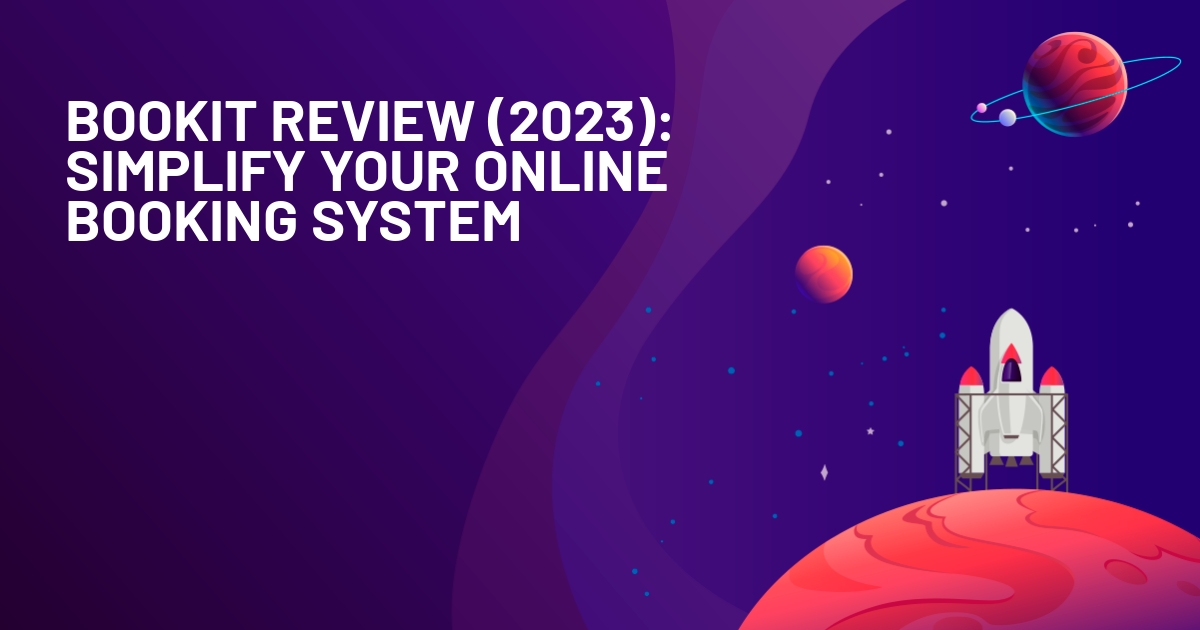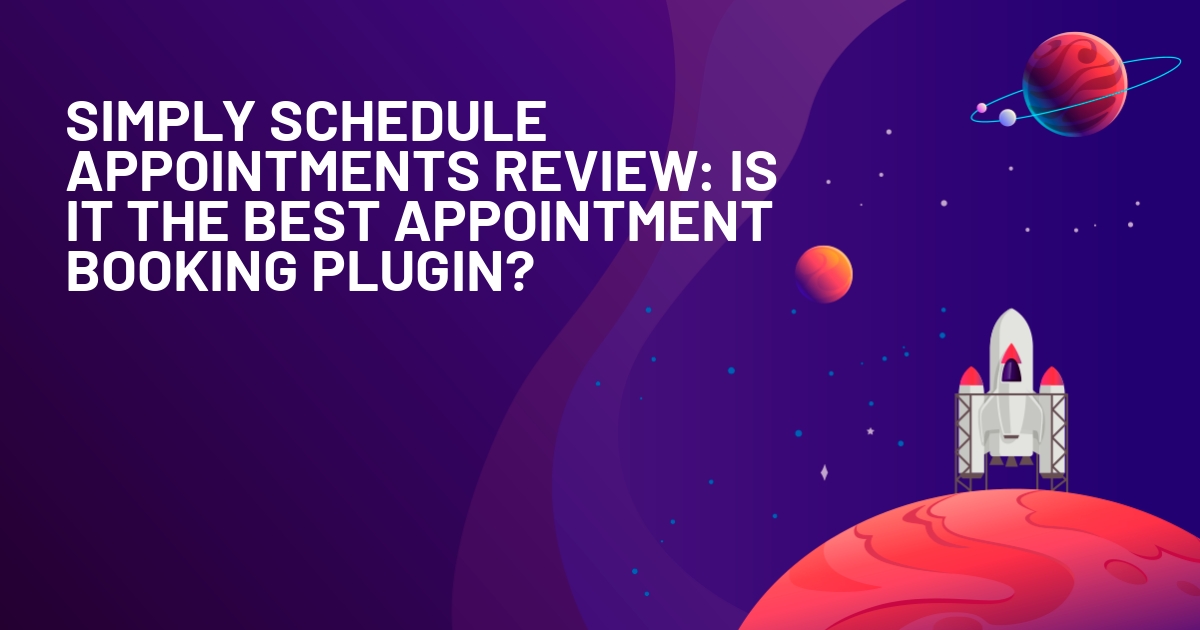WPLift is supported by its audience. When you purchase through links on our site, we may earn an affiliate commission.
Brindle Booking: An Extensive Review of WordPress Appointment Scheduler
Need to accept bookings on your WordPress website? Brindle Booking is a flexible WordPress booking plugin that lets you accept bookings for appointments, services, meetings, or even in-store pickup for products that a user has purchased.
It supports digital or physical (on-location) bookings and you also get some useful options, such as the ability to accept payments in exchange for bookings, calendar sync, reminders, and more.
In our hands-on Brindle Booking review, we’ll dig into this plugin and show you how it works.
Overall, I enjoyed my time with it and found the default user interface to be well done, which should create a great out-of-the-box experience for your site’s visitors.
Let’s dig in!
Brindle Booking Review: A Quick Look at the Features
I’ll show you all the features in the hands-on section, but here’s a quick overview of what Brindle Booking offers:
- Unlimited appointment services, which you can divide into categories.
- User-friendly front-end appointment booking system.
- Built-in payment integration via Stripe for paid services.
- Add physical location (for a single location).
- Let visitors choose between booking services online or in person.
- Support for multiple staff members, each with their own unique schedules.
- Google Calendar integration.
- Email notifications and reminders.
Other small, but useful, features include:
- GDPR support so that users must agree to your terms to book their appointment.
- Translation support via .po file (easily translate it using Loco Translate or multilingual plugins).
Overall, Brindle Booking is pretty flexible and you can use it for:
- Services
- Meetings
- In-store pickup
Brindle Booking Product Roadmap
Brindle Booking also has a public product roadmap that details a lot of interesting features in upcoming releases including:
- Booking lead times
- Multiple bookings per time slots
- Group bookings
- Multiple location support
- Ability to assign staff members to specific services
- Option to customize emails
- More payment gateways
- Add custom fields to the booking form
You can check out the full product roadmap to see everything that’s coming.

Article Continues Below
What Brindle Booking Is Like for Your Visitors
I’ll start by showing you how you and your visitors will experience the finished Brindle Booking system. Then, I’ll show you the options you have to set everything up in the next section.
On the front-end, Brindle Booking works entirely in a popup. You can use a shortcode to add the popup trigger anywhere on your site. Or, you can use a CSS class to trigger the popup, which lets you use a custom button (or a button that you’ve created with a page builder like Elementor or Divi).
On the first page of the popup, visitors can choose their staff member, the category of the service, and the specific service (from a list of all services in that category). They can also choose their appointment method – e.g. in person or online – and the day of their appointment:

On the next page, they can choose from the available time slots for that staff member, based on that staff member’s schedule for the day:

Next, visitors can enter their booking information and choose a payment method. They also get a nice summary box of their appointment details:

Once they confirm their appointment, they’ll get a nice confirmation screen, along with options to print their confirmation, share it on social media, or set a reminder on Google Calendar. They’ll also receive a confirmation email (you can’t currently customize the email, but that feature is on the roadmap):

Then, you (and your staff members) can view the upcoming appointments in the WordPress dashboard. Staff members will also receive an email confirmation for new appointments:

If you edit an appointment, you’ll be able to change all of its details, which gives you the ability to make manual edits as needed (e.g. if a customer needs to change their booking):

Now, let’s look at how to set up Brindle Booking on the backend.
How to Set Up Brindle Booking
Once you install and activate the plugin, you’ll get a new My Brindle area in your WordPress dashboard where you can set everything up.
The settings are divided into four tabs:
- Services
- Design
- Settings
- Schedule
Setting Up Services
To add services, you’ll first want to add one or more categories to organize your services (if you’re offering multiple services – otherwise you can just ignore the categories). Then, you can click the button to add a new bookable service to one of the categories:

When you add a new service, it will open a popup that lets you define the service title, category, and price:

You can repeat the process to add as many services as needed.
One thing you can’t do, though, is define a set time limit for each service. Instead, you can only set one global time duration for all of a staff member’s services. I think this would be useful to have for certain use cases. For example, if I offer both “One Hour Training Sessions” and “Two Hour Training Sessions”, it would be nice to have a built-in feature to accommodate that.
On the other hand, if you only offer appointments in fixed time blocks, you’re set to jet.
Controlling the Design
The Design tab gives you some basic options to control the colors on the booking form, which lets you match it to your site:

Configuring the Settings
The Settings tab gives you access to a lot of useful features including:
- Configuring the payment details and Stripe integration.
- Adding a physical location for your bookings.
- Choosing which methods people can use to book appointments (e.g. in store vs online vs phone call).
- Choosing what customer information to collect.
- Customizing the confirmation page.
- Integrating Google Calendar.
At the top, you can set up your payment methods and other information:

Further down, you can configure your physical location (if applicable) as well as lots of other options for what appears on the front-end booking form. For example, appointment methods, what customer details to collect, GDPR acknowledgment, and more.
At the bottom, there’s also an option to add your Google Calendar credentials:

One thing to note is that you can only control your appointment methods for your booking system as a whole – you can’t control them on a per-service basis, which I think could be a useful bit of flexibility to have.
Adding Schedules
Finally, the Schedule tab lets you set up schedules for your services as a whole.
You can either create one global schedule that applies to everyone. Or, you can create separate schedules for each staff member.
But first – a quick note on staff members. To add and manage staff members, Brindle Booking relies on the regular WordPress user system. You can add new staff members by going to Users → Add New. Brindle Booking adds its own special Staff Member user role, so only users with that role will show up in your booking system (this is useful if you want to allow user registration for non-staff members, too):

To add a schedule, select the time slots you want to use in the schedule grid and the staff member.
The schedule grid controls the default appointment duration for all of that staff member’s services. For example, if you set it to one hour, visitors will be able to book that staff member’s time in one-hour slots.
Then, you can block out that staff member’s schedule in the increments that you chose in the schedule grid. You can also choose whether or not to display that staff member on the front-end:

You can repeat the same process to add different schedules for different staff members.
And that’s it for the Brindle Booking settings. Overall, it’s a pretty lightweight solution and very easy to configure.
Brindle Booking Pricing
Brindle Booking only comes in a premium version, but it’s quite affordable, especially when compared to other WordPress booking plugins.
There are two license options, each of which includes all the features and one year of support and updates:
- One site – $39
- Unlimited sites – $89
You can also get a 14-day free trial to test it out at no risk, which is pretty unique for WordPress plugins.
Final Thoughts on Brindle Booking
Overall, I think Brindle Booking is a solid lightweight option with a really nice user experience on the front-end. I like the popup approach and think it has one of the best booking experiences of the plugins that I’ve tried.
It doesn’t have quite as much granular control as some other booking plugins (especially at the per-service level), but that also makes it a lot simpler and more lightweight. Additionally, lots of people don’t need those granular controls.
Because you can’t set a distinct time limit for individual services, I think Brindle Booking works best for situations where you only offer a few services or all your services are the same length. You can set different time limits for different staff members, but you can’t at a service level.
For example, if all you offer is one-hour training/coaching sessions, then Brindle Booking is a really lightweight option that can handle your use case.
The developer also has a lot of useful features on the product roadmap, so you will be getting even more detailed control soon.
If you’re interested, I recommend you try it out and see for yourself. Brindle Booking offers a 14-day free trial, so you’re not risking anything.











“Brindle Booking” is one of the best plugins I ever tested. But not very popular in our WordPress community.